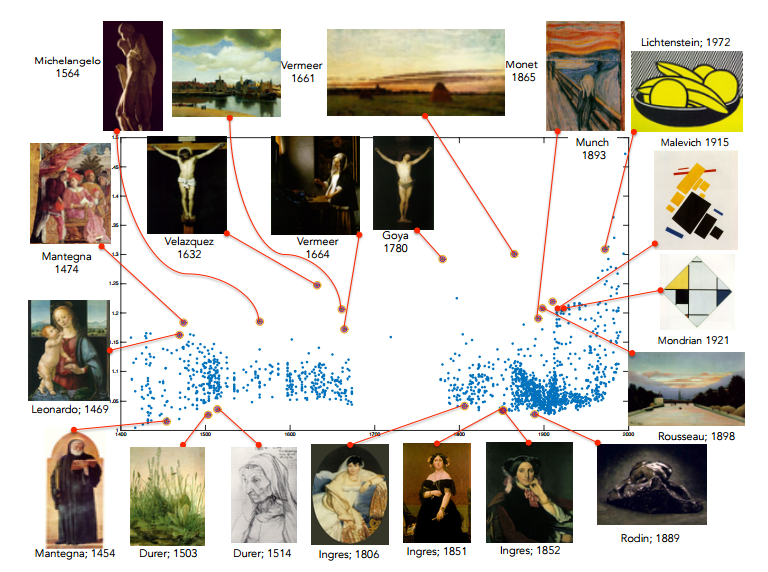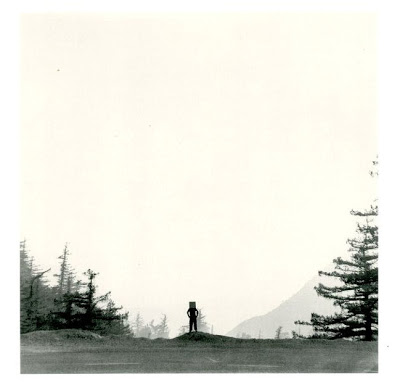COFFERED CEILING
PERMUTATIONS OF THE ARCH
PSEUDOPERIPTERAL
TECHNOLOGY OF "CAEMENTA"
PORTRAITURE
CIVIC,RELIGIOUS,
PRIVATE ARCHITECTURE
VITRUVIUS
FIRST STYLE
SECOND STYLE
THIRD STYLE
FOURTH STYLE
MOSAIC
"AUGUSTAN PEACE"
"DOMUS AUREA"
VESPASIAN AND HIS TIMES
TRAJAN AND HIS TIMES
HADRIAN AND HIS TIMES
ANTONINES ETAL
CONSTANTINE AND HIS TIMES
PANTHEON
INSULA AND URBAN LIFE
LATE STYLES
THE EMERGENCE OF CHRISTIANITY
BASILICAS AND CIVIC SPACE
THE ARCHITECTURAL NEEDS OF THE
"CHRISTIANI"

Archaeologists digging at Pylos, an ancient city on the southwest coast of Greece, have discovered the rich grave of a warrior who was buried at the dawn of European civilization.
He
lies with a yardlong bronze sword and a remarkable collection of gold
rings, precious jewels and beautifully carved seals. Archaeologists
expressed astonishment at the richness of the find and its potential for
shedding light on the emergence of the Mycenaean civilization, the lost
world of Agamemnon, Nestor, Odysseus and other heroes described in the
epics of Homer.
“Probably
not since the 1950s have we found such a rich tomb,” said James C.
Wright, the director of the American School of Classical Studies at
Athens. Seeing the tomb “was a real highlight of my archaeological
career,” said Thomas M. Brogan, the director of the Institute for Aegean
Prehistory Study Center for East Crete, noting that “you can count on
one hand the number of tombs as wealthy as this one.”
The
warrior’s grave belongs to a time and place that give it special
significance. He was buried around 1500 B.C., next to the site on Pylos
on which, many years later, arose the palace of Nestor, a large
administrative center that was destroyed in 1180 B.C., about the same
time as Homer’s Troy. The palace was part of the Mycenaean civilization;
from its ashes, classical Greek culture arose several centuries later. Slide Show
Ancient Treasures From a Warrior’s Grave
CreditDepartment of Classics/University of Cincinnati
The
palaces found at Mycene, Pylos and elsewhere on the Greek mainland have
a common inspiration: All borrowed heavily from the Minoan civilization
that arose on the large island of Crete, southeast of Pylos. The
Minoans were culturally dominant to the Mycenaeans but were later
overrun by them.
How,
then, did Minoan culture pass to the Mycenaeans? The warrior’s grave
may hold many answers. He died before the palaces began to be built, and
his grave is full of artifacts made in Crete. “This is a transformative
moment in the Bronze Age,” Dr. Brogan said.
The
grave, in Dr. Wright’s view, lies “at the date at the heart of the
relationship of the mainland culture to the higher culture of Crete” and
will help scholars understand how the state cultures that developed in
Crete were adopted into what became the Mycenaean palace culture on the
mainland.
Warriors
probably competed for status as stratified societies formed on the
mainland. This developing warrior society liked to show off its power
through high-quality goods, like Cretan seal stones and gold cups —
“lots of bling,” as Dr. Wright put it. “Perhaps we can theorize that
this site was that of a rising chiefdom,” he said.
The grave was discovered this spring, on May 18, by Jack L. Davis and Sharon R. Stocker, a husband-and-wife team at the University of Cincinnati who have been excavating at Pylos for 25 years.
The
top of the warrior’s shaft grave lies at ground level, seemingly so
easy to find that it is quite surprising the tomb lay intact for 35
centuries.
“It
is indeed mind boggling that we were first,” Dr. Davis wrote in an
email. “I’m still shaking my head in disbelief. So many walked over it
so many times, including our own team.”

The
palace at Pylos was first excavated by Carl Blegen, also of the
University of Cincinnati, who on his first day of digging in 1939
discovered a large cache of tablets written in the script known as
Linear B, later deciphered as the earliest written form of Greek.
Whether
or not Blegen’s luck was on their mind, Dr. Davis and Dr. Stocker
started this season to excavate outside the palace in hope of hitting
the dwellings that may have surrounded it and learning how ordinary
citizens lived. On their first day of digging, they struck two walls at
right angles. First they assumed the structure was a house, then a room,
and finally a grave.
“I
was very pessimistic about this,” Dr. Davis said, thinking that the
grave was probably some medieval construction, or that even if it was
prehistoric it would almost certainly have been robbed. But a few days
later, he received a text message from the supervising archaeologist
saying, “I hit bronze.”
What
he and Dr. Stocker had stumbled on was a very rare shaft grave, 5 feet
deep, 4 feet wide and 8 long. Remarkably, the burial was intact apart
from a one-ton stone, probably once the lid of the grave, which had
fallen in and crushed the wooden coffin beneath.
The
coffin has long since decayed, but still remaining are the bones of a
man about 30 to 35 years old and lying on his back. Placed to his left
were weapons, including a long bronze sword with an ivory hilt clad in
gold and a gold-hilted dagger. On his right side were four gold rings
with fine Minoan carvings and some 50 Minoan seal stones carved with
imagery of goddesses and bull jumpers. “I was just stunned by the
quality of the carving,” Dr. Wright said, noting that the objects “must
have come out of the best workshops of the palaces of Crete.”
An
ivory plaque carved with a griffin, a mythical animal that protected
goddesses and kings, lay between the warrior’s legs. The grave contained
gold, silver and bronze cups.
The
warrior seems to have been something of a dandy. Among the objects
accompanying him to the netherworld were a bronze mirror with an ivory
handle and six ivory combs.

Because
of the griffins depicted in the grave, Dr. Davis and Dr. Stocker refer
to the man informally as the “griffin warrior.” He was certainly a
prominent leader in his community, they say, maybe the pre-eminent one.
The palace at Pylos had a king or “wanax,” a title mentioned in the
Linear B tablets, but it’s not known if this position existed in the
griffin warrior’s society.
Ancient
Greek graves can be dated by their pottery, but the griffin warrior’s
grave had none: His vessels are made of silver or gold, not humble clay.
From shards found above and below the grave, however, Dr. Davis
believes it was dug in the period known as Late Helladic II, a
pottery-related chronology that corresponds to 1600 B.C. to 1400 B.C.,
in the view of some authorities, or 1550 B.C. to 1420 B.C., in the view
of others.
If
the earliest European civilization is that of Crete, the first on the
European mainland is the Mycenaean culture to which the griffin warrior
belongs. It is not entirely clear why civilization began on Crete, but
the island’s population size and favorable position for sea trade
between Egypt and Greece may have been factors. “Crete is ideally
situated between mainland Greece and the east, and it had enough of a
population to resist raids,” said Malcolm H. Wiener, an investment
manager and expert on Aegean prehistory.
The
Minoan culture on Crete exerted a strong influence on the people of
southern Greece. Copying and adapting Minoan technologies, they
developed the palace cultures such as those of Pylos and Mycene. But as
the Mycenaeans grew in strength and confidence, they were eventually
able to invade the land of their tutors. Notably, they then adapted
Linear A, the script in which the Cretans wrote their own language, into
Linear B, a script for writing Greek.
Linear
B tablets, were preserved in the fiery destruction of palaces when the
soft clay on which they were written was baked into permanent form,
Caches of tablets have been found in Knossos, the main palace of Crete,
and in Pylos and other mainland palaces. Linear B, a script in which
each symbol stands for a syllable, was later succeeded by the familiar
Greek alphabet in which each symbol represents a single vowel or
consonant.
The
griffin warrior, whose grave objects are culturally Minoan but whose
place of burial is Mycenaean, lies at the center of this cultural
transfer. The palace of Pylos had yet to arise, and he could have been
part of the cultural transition that made it possible. The transfer was
not entirely peaceful: At some point, the Mycenaeans invaded Crete, and
in 1450 B.C., the palace of Knossos was burned, perhaps by Mycenaeans.
It is not yet clear whether the objects in the griffin warrior’s tomb
were significant in his own culture or just plunder.
“I
think these objects were not just loot but had a meaning already for
the guy buried in this grave,” Dr. Davis said. “This is the critical
period when religious ideas were being transferred from Crete to the
mainland.”
The
Mycenaeans used the Minoan sacred symbol of bull’s horns on their
buildings and frescoes, and their religious practices seem to have been a
mix of Minoan concepts with those of mainland Greece.
Archaeologists
are looking forward to studying a major unlooted tomb with modern
techniques like DNA analysis, which may shed light on the warrior’s
origin. DNA, if extractable from the warrior’s teeth, may tell where in
Greece he was born. Suitable plant material, if found in the tomb, could
yield a radiocarbon date for the burial.
This
and other techniques allow far more information to be extracted from a
rich grave site than was possible with the picks and shovels used by
earlier excavators. “We’ve come a long way from Heinrich Schliemann,”
said Mr. Wiener, referring to the efforts of the 19th-century German
businessman who excavated Troy and Mycene to support his view that the
events described by Homer were based on historical fact.





























His work is hard to watch; its not music video stuff. Everything he did was totally silent. But that only enhanced the hypnotic trance the visuals lulled you into. Not everything he did was as pleasant as Moth Light or Commingled Containers. The Act of Seeing With One's Own Eyes is STILL unwatchable for most people (the title is the literal translation of "autopsy"...you can figure out the rest).
All told, Brakhage made about 400 films in his lifetime. 400! That's remarkable! Its more than the handmade craft of his work; its the raw curiosity he had about what it's like to be alive. The curiosity is priceless--you can't teach it, but you can foster it. In Brackhage's work, there's no pretense. No fashion. No grandiose proclamations. Just sheer, confrontational beauty.
What do we need to get back? We need to get back the joy of creating, of wondering. And we need to ditch the desire for fame and recognition that so often characterizes much of the "art" world.